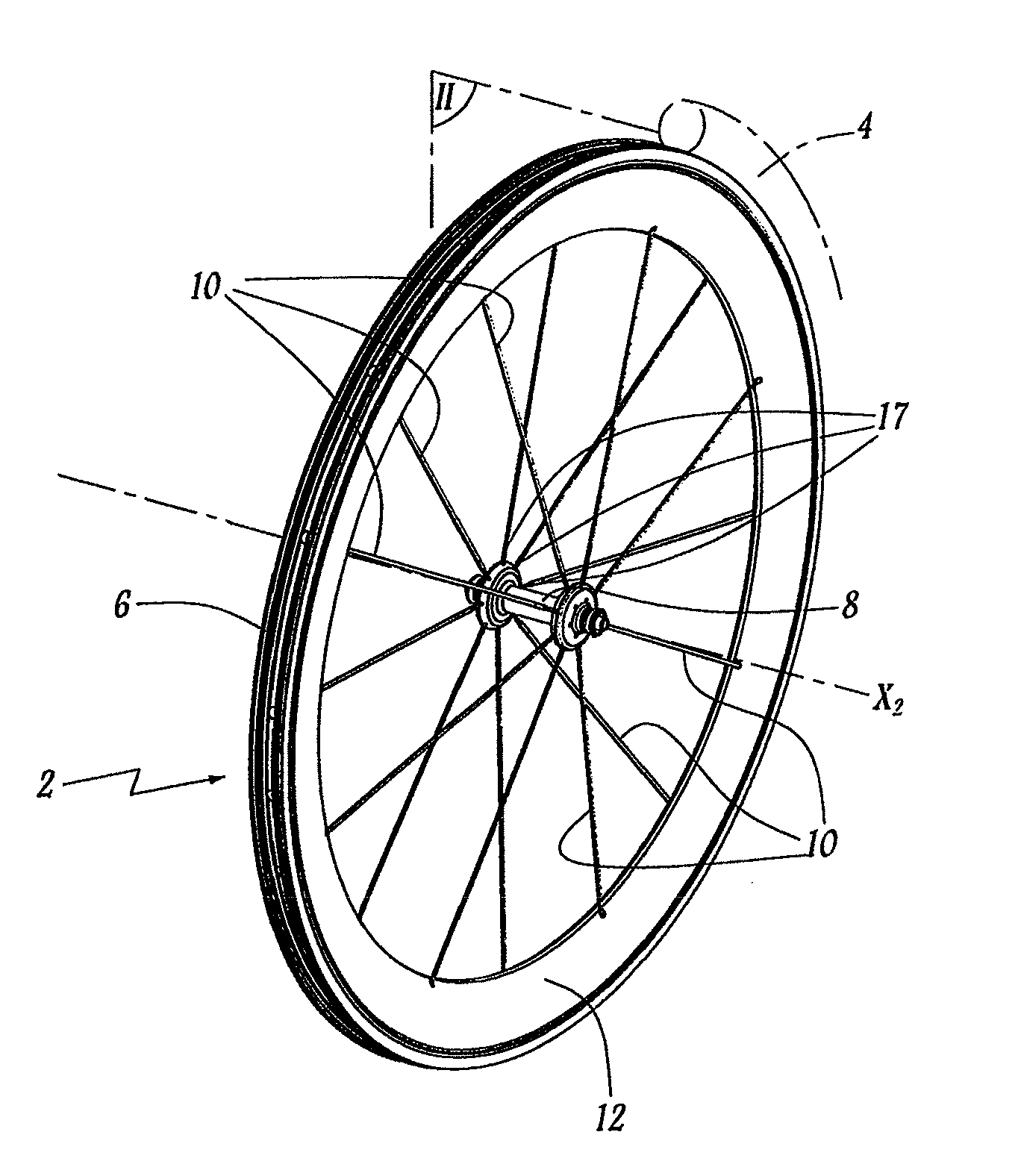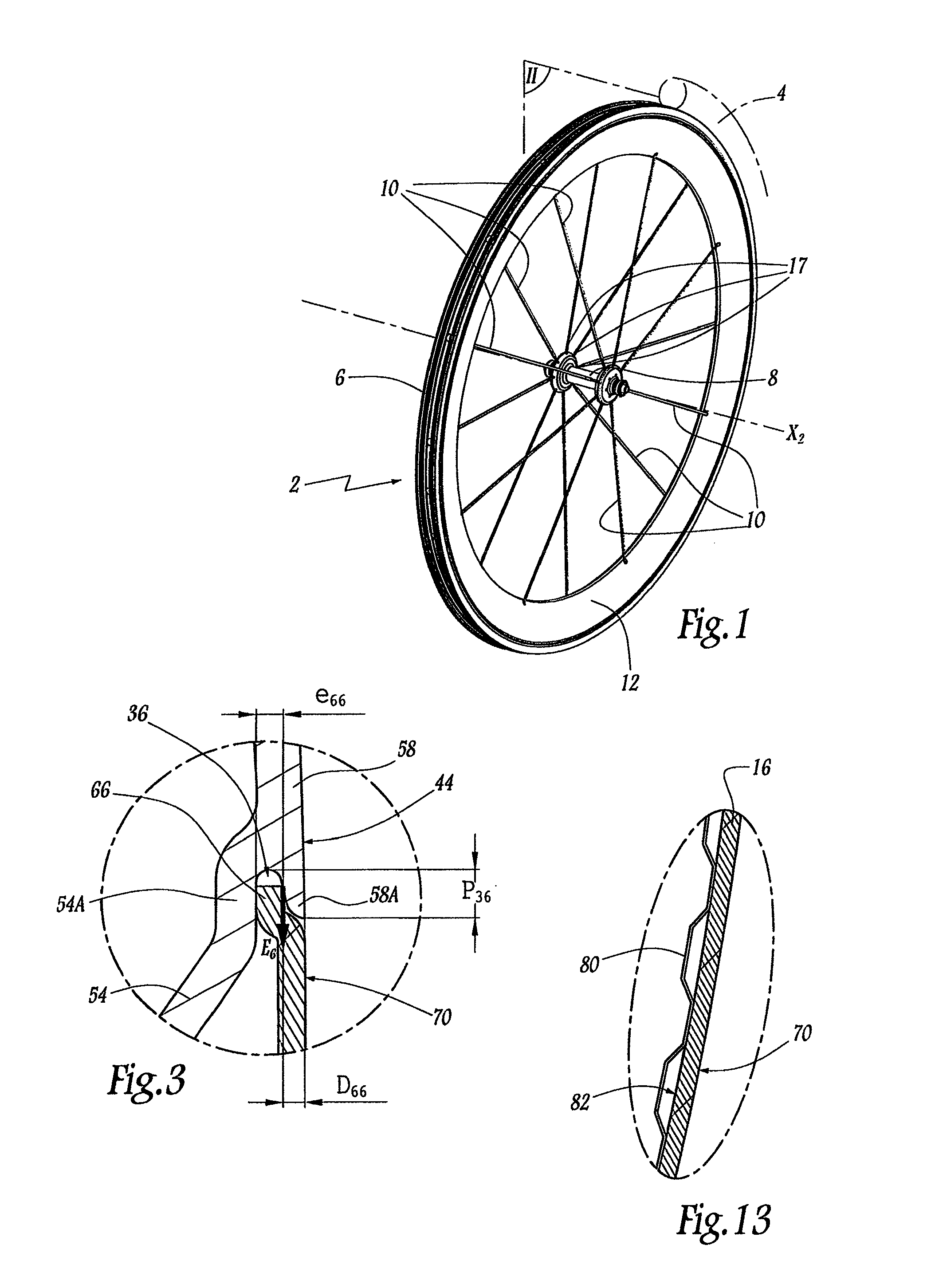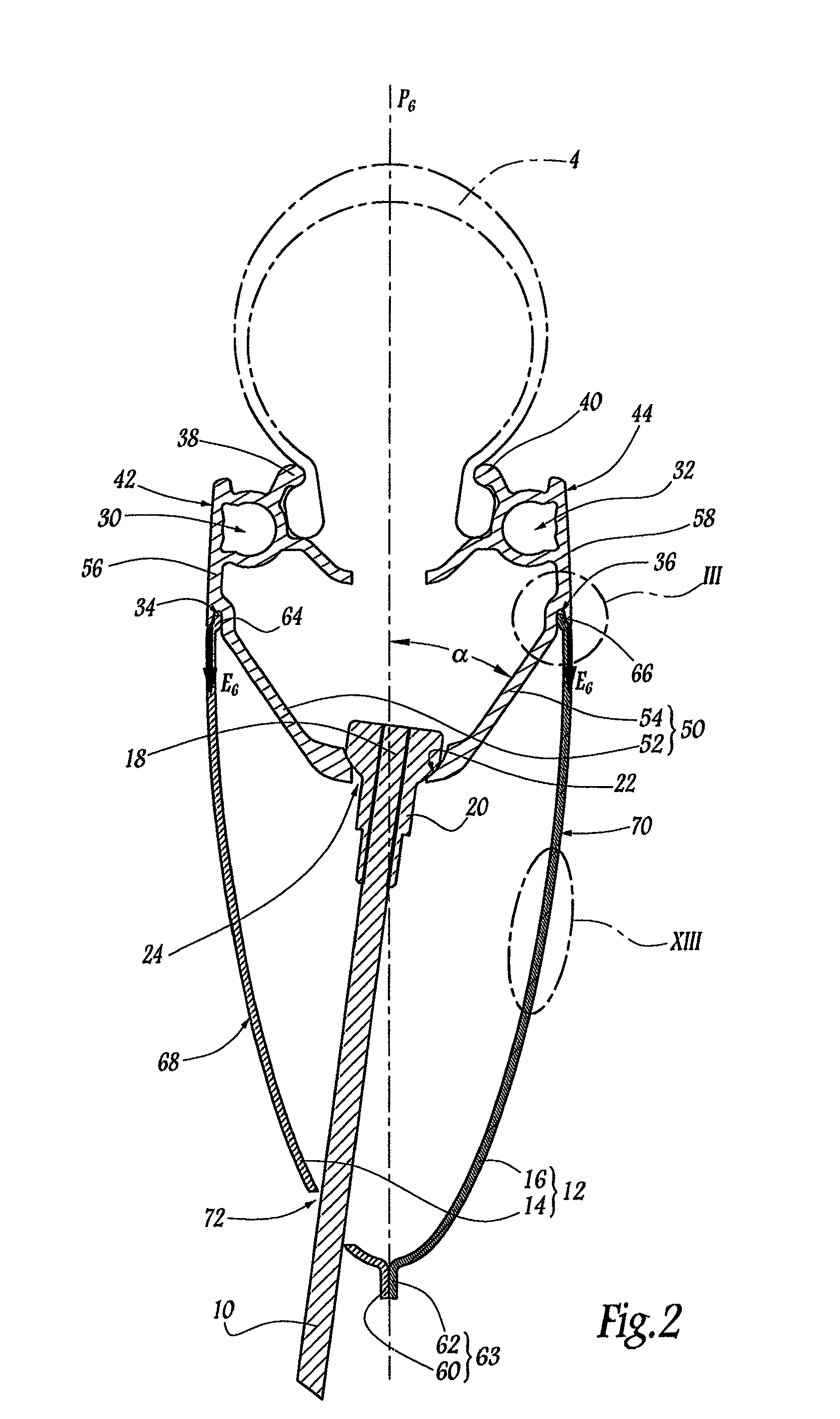Cycle wheel and methods for manufacturing such a wheel
a technology of cycle wheels and rims, which is applied in the field of cycle wheels, can solve the problems of difficult bending of the rim, high production costs, and limited use of high-end or competition cycles, and achieve the effect of improving the performance of cyclists
- Summary
- Abstract
- Description
- Claims
- Application Information
AI Technical Summary
Benefits of technology
Problems solved by technology
Method used
Image
Examples
first embodiment
[0121]In the embodiments of the invention shown in FIG. 13 and subsequent drawing figures, the elements that are similar to those of the first embodiment bear the same reference numerals. Hereinafter, only that which distinguishes each of the embodiments over the embodiment of FIGS. 1 to 12 is described.
[0122]In the embodiment of FIG. 13, the half-shell 16 is equipped with an inner skin 80 welded locally onto its inner surface 82. This makes it possible to stiffen the half-shell 16 in order to withstand a buckling force that is exerted within this half-shell, between its radially outer edge 66 and its radially inner edge 62, under the effect of the force E6. The inner skin 80 thus constitutes a stiffener for the half-shell 16. In this embodiment, the shell 14 is also equipped with an inner skin 80 forming a stiffener. All the walls of the wheel fairing 12 are therefore provided with a stiffener.
[0123]Other stiffening structures are encompassed within the scope of the invention, such...
third embodiment
[0130]Moreover, the wheel 2 of the third embodiment can be manufactured according to the method depicted in FIGS. 16 and 17. According to this method, the rim 6 is immobilized between two clamping jaws 300 and 301. Each jaw 300 and 301 is equipped with a ramp 302, 303, respectively, inclined with respect to the plane P6, and which ends in the vicinity of the extensions 58A and equivalent of the sides 56 and 58 of the rim 6 which laterally demarcate the grooves 34 and 36.
[0131]The half-shell 14 is positioned on the rim 6 by means of a pusher 310 that moves perpendicular to the plane P6, and in the direction of such plane, as represented by the arrow F310. The pusher 310 can be made of a pliable or flexible material, such as an elastomer, for example, in order to avoid scratching the half-shell 14. The movement F310 of the pusher 310 takes place while the radially outer edge 64 of the half-shell 14 slides against the ramp 302, until the edge 64 engages in the groove 34. That position ...
fourth embodiment
[0134]In the invention shown in FIG. 18, the respective radially inner edges 60 and 62 of the half-shells 14 and 16 are welded by laser, edge surface to edge surface and on a reinforcing ring 84 made of a material similar to that forming the core of the half-shells 14 and 16. The ring 84, which makes the connection between the edges 60 and 62, is arranged in the inner volume V12 of the wheel fairing 12.
PUM
| Property | Measurement | Unit |
|---|---|---|
| radial depth | aaaaa | aaaaa |
| thickness | aaaaa | aaaaa |
| thickness | aaaaa | aaaaa |
Abstract
Description
Claims
Application Information
 Login to View More
Login to View More - R&D
- Intellectual Property
- Life Sciences
- Materials
- Tech Scout
- Unparalleled Data Quality
- Higher Quality Content
- 60% Fewer Hallucinations
Browse by: Latest US Patents, China's latest patents, Technical Efficacy Thesaurus, Application Domain, Technology Topic, Popular Technical Reports.
© 2025 PatSnap. All rights reserved.Legal|Privacy policy|Modern Slavery Act Transparency Statement|Sitemap|About US| Contact US: help@patsnap.com



